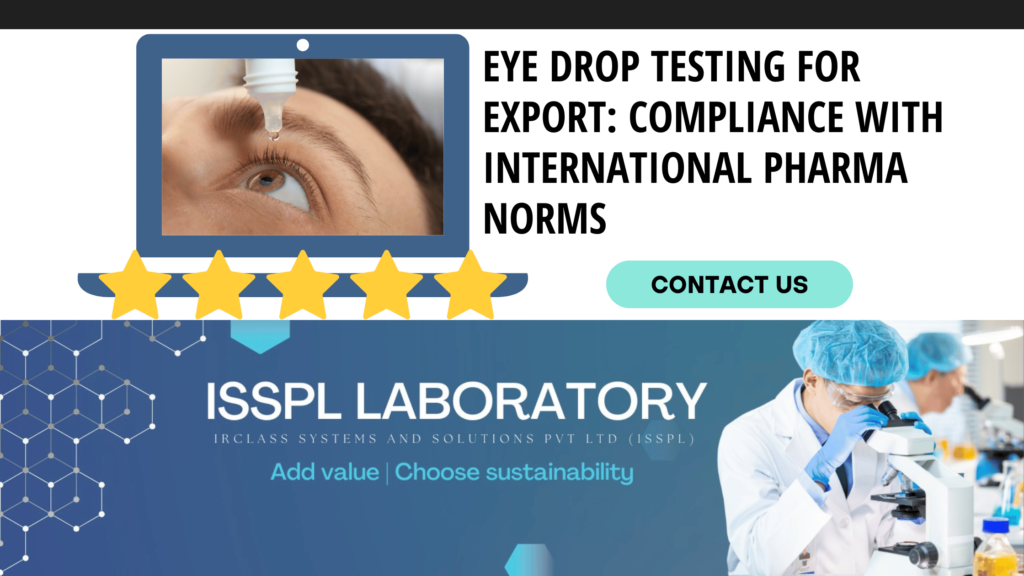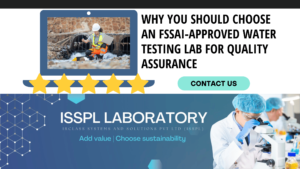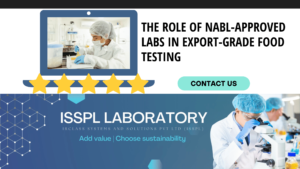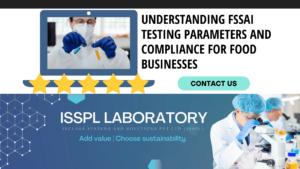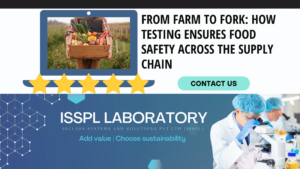An Overview by Team ISSPL - Analytical Testing Laboratory in India
ToggleEye drops are not like other medicines. They are used on one of the most sensitive parts of the body. There is no margin for error. One small mistake can cause damage that cannot be reversed. That is why eye drops must meet international safety norms before they reach any market.
Testing is a core step in this process. It checks that the product is stable, clean and safe. Without it, no regulator will approve the shipment. Testing also helps the company avoid delays and keep up with orders.
What Makes Eye Drops So Sensitive
When a person uses an eye drop, the medicine enters the eye directly. This is not the same as taking a tablet. The body cannot filter it in the same way. That makes safety a top concern. Any issue with the product can lead to irritation or infection. In some cases, it can even affect vision.
Eye drops must be free from microbes. They must also be free from dust, metal or any other particle. Even the container must stay sterile. That is not easy to check without testing.
The testing process looks at every part of the product. This includes the liquid inside the bottle along with the cap and label.
What the Global Norms Expect
Each country has its own health body. These groups allow or reject a product based on test data. Some of the better-known ones include USFDA, WHO and EMA. They do not accept claims without proof. The tests must be done using set procedures.
A full set of tests may include:
- Sterility test to confirm no microbes are present
- pH test to check eye comfort
- Active ingredient test to confirm the strength
- Container compatibility test to avoid reactions
- Preservative content test to avoid microbial growth
- Stability study to confirm shelf life
The product must pass all of these before it is accepted.
Why Sterility Testing Matters Most
Sterility is one of the most important parts of this testing. If even one drop is not sterile, the batch fails. This test is done using a clean room and strict procedures. The product is exposed to a growth medium. Then it is kept under close watch. If no microbes grow over time, the batch passes.
This test takes time. It cannot be rushed. If the product is not handled right during the test, the result is not valid. That is why trained staff and the right lab setup are required.
Preservatives Also Need Testing
Many eye drops contain preservatives. These are used to stop bacterial growth after the bottle is opened. The problem starts when the amount is too high or too low.
Too little means the bottle may not stay safe after opening. Too much can cause eye pain or dryness. That is why the amount must be checked using lab tools.
This test helps confirm the formula is balanced. It also helps meet the safety norms of different countries.
Stability Testing Builds Trust
A product may be safe when it leaves the factory. But what happens after six months on a shelf or two weeks in a hot place?
That is what stability testing shows. The product is stored at different temperatures. It is then tested again and again. The results show if the formula changes over time.
This check is used to decide the shelf life. It also helps set the storage advice. A product that is stable for twelve months will not look or act the same as one that is only stable for three.
The results of this test must match the label. If not, the export cannot move forward.
The Role of Packaging in Safety
The bottle is not just for looks. It protects the drop from air and dust. If the bottle or cap leaks, the product fails. That is why container testing is done.
Labs check how the bottle reacts with the formula. They also check how well it seals. In some cases, the plastic may react with the medicine. That can lower the strength or change the colour.
A bottle that passes all tests helps make sure the product is safe for the full shelf life.
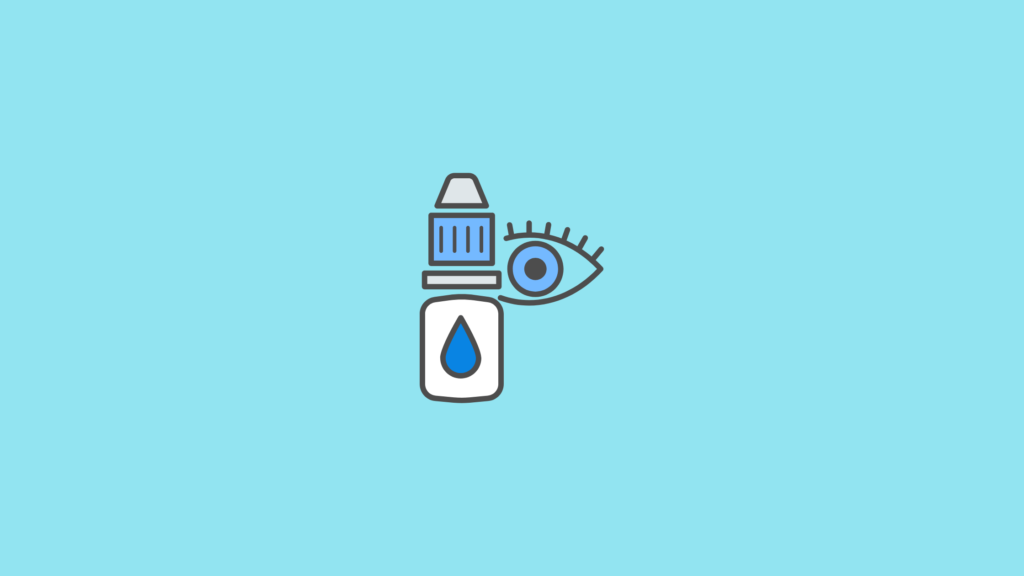
Label Accuracy Cannot Be Ignored.
Every product must match its label. The label says how strong the dose is and how to use it. It also says how long it lasts and how it must be stored.
If the label says one thing but the formula says something else, the product fails. Testing confirms that the actual content matches the printed claim.
This keeps the user safe. It also prevents legal trouble for the seller or exporter.
Heavy Metals and Other Impurities
Sometimes raw materials bring in impurities. These may include lead, mercury or arsenic. Even water used in the formula can carry these if not filtered well.
The lab checks for these using high-end tools. Even a small trace of these metals is not allowed. The product must show clear results or the batch is rejected.
This step helps avoid health issues that are hard to track once the product is on shelves.
Why Timing and Process Matter
Many companies send products for testing only when export papers are due. That creates stress. If the batch fails, they cannot fix it in time.
The better way is to test during early production. This way, if something goes wrong, the team has time to act. It also helps build better process control over time.
Testing is not just for paper clearance. It helps avoid recalls, rejections and lost trust.
The Right Lab Makes a Big Difference
Pharma testing is not for every lab. The team must know how to test sterile products. They must follow procedures without gaps. They must also be able to explain the report in clear terms.
The lab must be approved to test pharma products. It should follow ISO 17025. That shows the lab has the right tools and checks in place.
It also helps when the lab has experience with export batches. That way, they know what customs officers or buyers may ask for.
Export Rules Keep Changing
Countries are able to update their pharmaceutical importation laws. They may demand new tests or correct the limits. It means that the exporter is to be vigilant and alter the testing plan.
A laboratory that checks such changes helps the exporter to track them. They can teach the team when to retest or add a new test.
Without this support, the exporter may lose orders or get delayed.
How ISSPL Helps Pharma Exporters
ISSPL helps pharma companies by offering full eye drops testing. Their laboratory is concerned with sterility tests and stability tests, preservative tests and packaging test. They work in accordance with the international standards and help the clients to meet the export deadlines without any stress. The Jaipur lab is certified to ISO 17025 and it serves pharma customers in India.
FAQs
Why is eye drop testing needed before export?
Eye drops must meet strict safety norms before they reach international markets. Testing confirms the product is sterile, stable and labeled correctly. Without this data, the product will not pass regulatory checks.
What tests are done on eye drops?
Tests include sterility checks along with preservative levels, pH value, stability under different temperatures and packaging safety. Some batches are also tested for heavy metals and foreign particles.
Who decides the testing requirements for export?
Each country has its own pharma regulator. These include bodies like USFDA and EMA. They require proof from certified labs that the product meets safety and quality norms.
Can testing be done after packing is complete?
It can be done, but it carries risk. If the batch fails, it cannot be shipped. Most companies test during early production. This way there is time to fix issues and avoid delays.
What type of lab is accepted for eye drop testing?
The lab must follow ISO 17025 and be approved for pharma testing. It should have clean rooms for sterility work along with trained staff and accurate instruments. Reports from such labs are accepted during audits and export checks.
